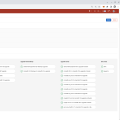Corporate best practices for upstream open source contributions
This post is based on presentation given at the Validos annual members’ meeting on June 25th, 2025.

This post is based on presentation given at the Validos annual members’ meeting on June 25th, 2025.

In this post, I demonstrate the optimal workflow for creating new Debian packages in 2025, preserving the upstream git history. The motivation for this is to lower the barrier for sharing improvements to and from upstream, and to improve software provenance and supply-chain security by making it easy to inspect every change at any level using standard git tooling. Key elements of this workflow include: Using a Git fork/clone of the upstream repository as the starting point for creating Debian packaging repositories. Consistent use of the same git-buildpackage commands, with all package-specific options in gbp.conf. DEP-14 tag and branch names for an optimal Git packaging repository structure. Pristine-tar and upstream signatures for supply-chain security. Use of Files-Excluded in the debian/copyright file to filter out unwanted files in Debian. Patch queues to easily rebase and cherry-pick changes across Debian and upstream branches. Efficient use of Salsa, Debian’s GitLab instance, for both automated feedback from CI systems and human feedback from peer reviews. To make the instructions so concrete that anyone can repeat all the steps themselves on a real package, I demonstrate the steps by packaging the command-line tool Entr. It is written in C, has very few dependencies, and its final Debian source package structure is simple, yet exemplifies all the important parts that go into a complete Debian package:
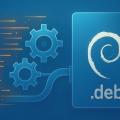
Are you a student aspiring to participate in the Google Summer of Code 2025? Would you like to improve the continuous integration pipeline used at salsa.debian.org, the Debian GitLab instance, to help improve the quality of tens of thousands of software packages in Debian?

Becoming a Debian maintainer is a journey that combines technical expertise, community collaboration, and continuous learning. In this post, I’ll share 10 key habits that will both help you navigate the complexities of Debian packaging without getting lost, and also enable you to contribute more effectively to one of the world’s largest open source projects.

Most people with Linux experience have at some point installed .deb files on Debian or the more famous variant of it, Ubuntu. Programmers who have been involved with packaging and shipping software know that the code that generates those .deb packages is always in the debian/ subdirectory in a software project. However, anyone who has tried to do Debian packaging also knows that all the automation involved can be challenging to grasp, and building packages, modifying packaging files, and repeatedly rebuilding them can feel way more frustrating than iterating in regular software development. As Debian has been around for three decades already, there is a lot of online documentation available, but unfortunately, most of it is outdated, and reading about old tools might just add to the confusion. Thus, let me introduce an explainer of what the structure in 2025 should look like on a well-maintained Debian package source, and what benefits it brings. First, I’ll run through the basics to ensure all readers have them fresh in their mind, and further down, I get into the increasingly complex workings of how Debian source packaging works and why they have a certain git repository structure.
Git is by far the most popular software version control system today, and every software developer surely knows the basics of how to make a git commit. Given the popularity, it is surprising how many people don’t actually know the advanced commands. Mastering them might help you unlock a new level of productivity. Let’s dive in!

When people learn programming they – for completely obvious and natural reasons – initially focus on learning the syntax of programming languages and libraries. However, these are just tools. The essence of software engineering is about automating thought, applying algorithmic thinking and anticipation of the known and unknown. The code might be succinct, but the reasoning behind it can be extensive, and it needs to show in the communication around the code. The more senior a programmer is, the more their success depends on their communication skills.

In software development, the code review process stands as a crucial checkpoint for ensuring code quality, fostering collaboration, and promoting knowledge sharing among team members. Despite the importance, many engineers lack a clear mental map of how effective reviews work. This is my attempt to help code reviews and reviewers improve.

The key to being productive as a programmer is to have a great code editor. I have been an avid user of Atom since 2014, and its successor Pulsar since now in 2023.
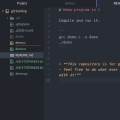
As a software developer, your core skill is how to improve an existing code base to make the software better iteratively, patch by patch. To be a good software developer you need to: understand the concept of a code patch, know how do code improvements in well sized and properly documented patches, and skillfully use git version control software to manage patches.
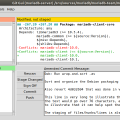
The main test system in the MariaDB open source database project is the mariadb-test-run script (inherited from mysql-test-run). It is easy to run to and does not require you to compile any source code.
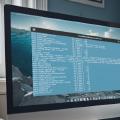
What is the key to being an efficient programmer? Well, the answer is surprisingly simple. Having a setup where you can write and test your code over and over in an uninterrupted flow will dramatically increase your productivity.

Of all CI systems I’ve used during my software development career, both as developer and manager, GitLab CI has proven itself to be the overall best system out there.
